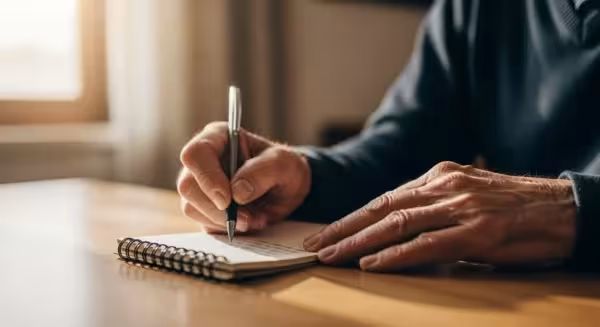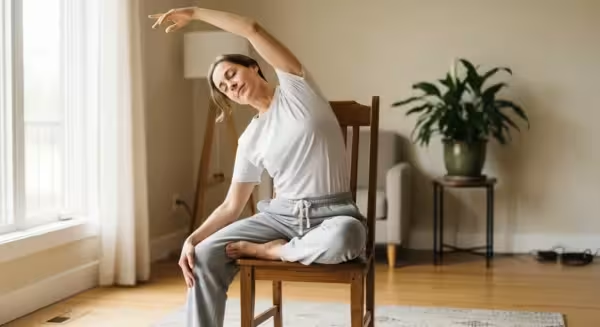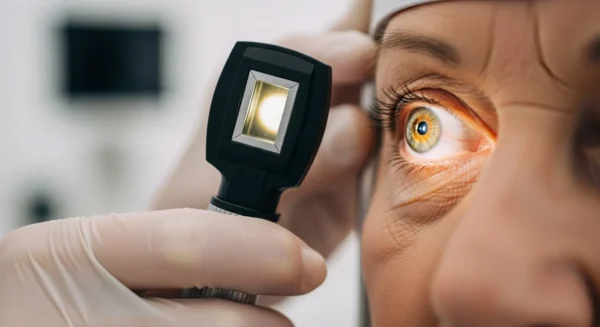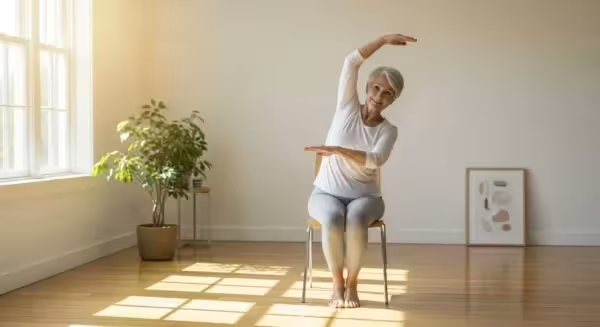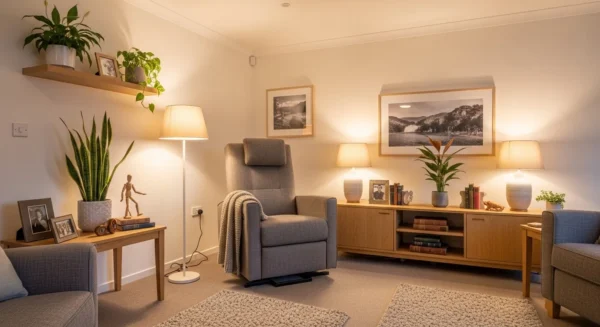
A Step-by-Step Guide to Mindfulness Practices Safely
Getting started with mindfulness doesn’t require any special equipment or previous experience. It’s about finding a few quiet moments in your day to connect with yourself. The key is consistency, not perfection. Here are four simple, safe practices perfect for beginners.
1. Mindful Breathing
This is the foundation of most mindfulness practices. It can be done anywhere, anytime you feel a moment of stress or simply want to ground yourself. Just five minutes of focused breathing can have a calming effect.
Step-by-Step Guide:
- Find a Comfortable Position: Sit in a sturdy chair with your feet flat on the floor and your back straight but not stiff. You can also lie down on your back if that is more comfortable, perhaps with a pillow under your knees for support. Rest your hands gently on your lap or at your sides.
- Gently Close Your Eyes: If you prefer, you can leave them open with a soft, unfocused gaze on the floor a few feet in front of you.
- Bring Awareness to Your Breath: Don’t try to change how you are breathing. Simply notice the sensation of the breath entering your body and leaving your body. Feel the air as it comes in through your nose and out through your mouth or nose.
- Notice the Physical Sensations: Pay attention to the gentle rise and fall of your chest and belly with each breath. Notice the coolness of the air as you inhale and the warmth as you exhale.
- When Your Mind Wanders, Gently Return: Your mind will wander. That is completely normal. When you notice your thoughts have drifted to your to-do list or a worry, gently and without judgment, guide your attention back to the sensation of your breath. The act of returning is the practice itself.
- Continue for 5 Minutes: Start with a short session. You can set a gentle timer. When you are finished, take a moment to notice how you feel before slowly opening your eyes and continuing with your day.
Safety First: Never hold your breath or force your breathing. The goal is natural, easy breathing. If you ever feel dizzy or lightheaded, simply stop and return to your normal breathing.
2. The Body Scan
A body scan is a wonderful practice for releasing physical tension you might not even be aware you’re holding. It promotes deep relaxation and can be especially helpful before bed.
Step-by-Step Guide:
- Get Comfortable: Lie down on your back in a comfortable, warm place. If lying down is difficult, you can do this practice while seated in a supportive chair. Place your arms at your sides, palms up, and let your feet fall naturally outward.
- Begin with a Few Deep Breaths: Take three slow, gentle breaths to settle into the moment.
- Focus on Your Toes: Bring your attention to the toes of your left foot. You don’t need to move them. Simply notice any sensations you feel—warmth, coolness, tingling, or the pressure of a sock. Just observe without judgment.
- Slowly Move Upward: Gradually move your awareness from your toes to the sole of your foot, your heel, your ankle, and up through your calf and shin. Spend a few moments on each part, simply noticing.
- Continue Through Your Whole Body: After your left leg, repeat the process with your right leg. Then move your attention slowly through your pelvis, your abdomen, your lower and upper back, your chest, and your fingers. Move up through your arms to your shoulders, neck, and finally, your face. Notice your jaw, your eyes, and the space between your eyebrows.
- End with Full Body Awareness: Once you have scanned your entire body, spend a minute or two feeling your body as a whole, breathing gently. Notice the feeling of wholeness and calm.
Safety First: The goal is not to force relaxation but to simply be aware. If you fall asleep during the practice, that’s perfectly fine—it means your body is getting the rest it needs.
3. Mindful Walking
If sitting still feels challenging, mindful walking is an excellent alternative. It combines light physical activity with mental focus, making it a great practice for both mind and body.
Step-by-Step Guide:
- Choose a Safe Space: Find a short, clear path where you can walk back and forth without worrying about obstacles. This could be a hallway in your home, a flat part of your backyard, or a smooth path in a park.
- Stand and Center Yourself: Before you begin, stand still for a moment. Feel your feet firmly planted on the ground. Take a few deep breaths.
- Walk Slowly and Deliberately: Begin to walk at a much slower pace than you normally would. Pay close attention to the physical sensations of walking.
- Focus on Your Feet: Notice the feeling of lifting one foot off the ground. Feel the movement of your leg through the air. Notice the sensation of your heel touching the ground, then the ball of your foot, and then your toes. Repeat with the other foot.
- Expand Your Awareness: As you continue, you can also bring your attention to the feeling of the air on your skin, the sounds around you, or the gentle swing of your arms.
- Stay Present: Just like with mindful breathing, when your mind wanders, gently guide it back to the physical sensations of walking.
Safety First: Your physical safety is paramount. Wear comfortable, supportive shoes with good grip. If you use a cane or walker, use it during this practice. Stay aware of your surroundings and only practice in a well-lit, hazard-free area.


